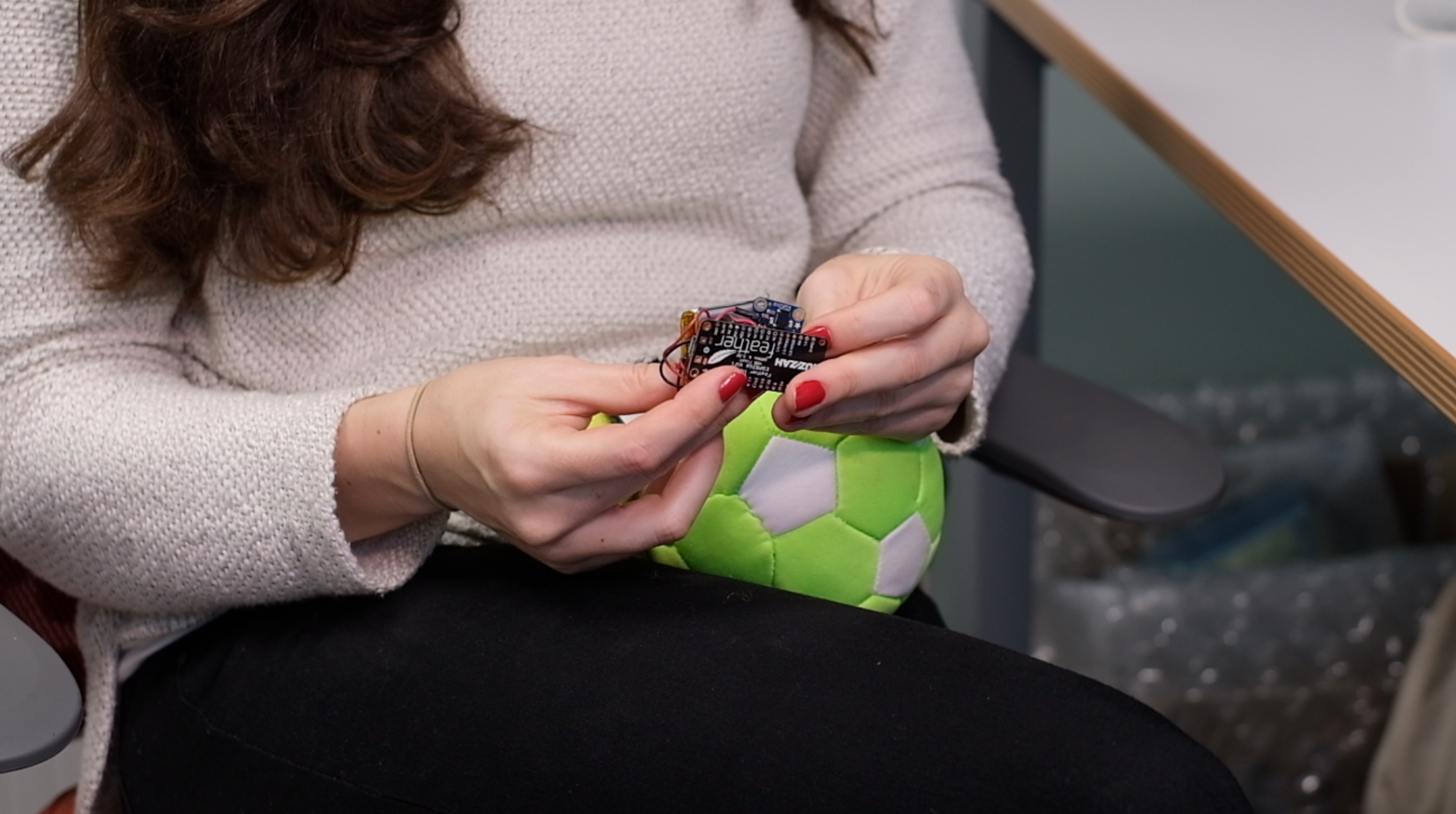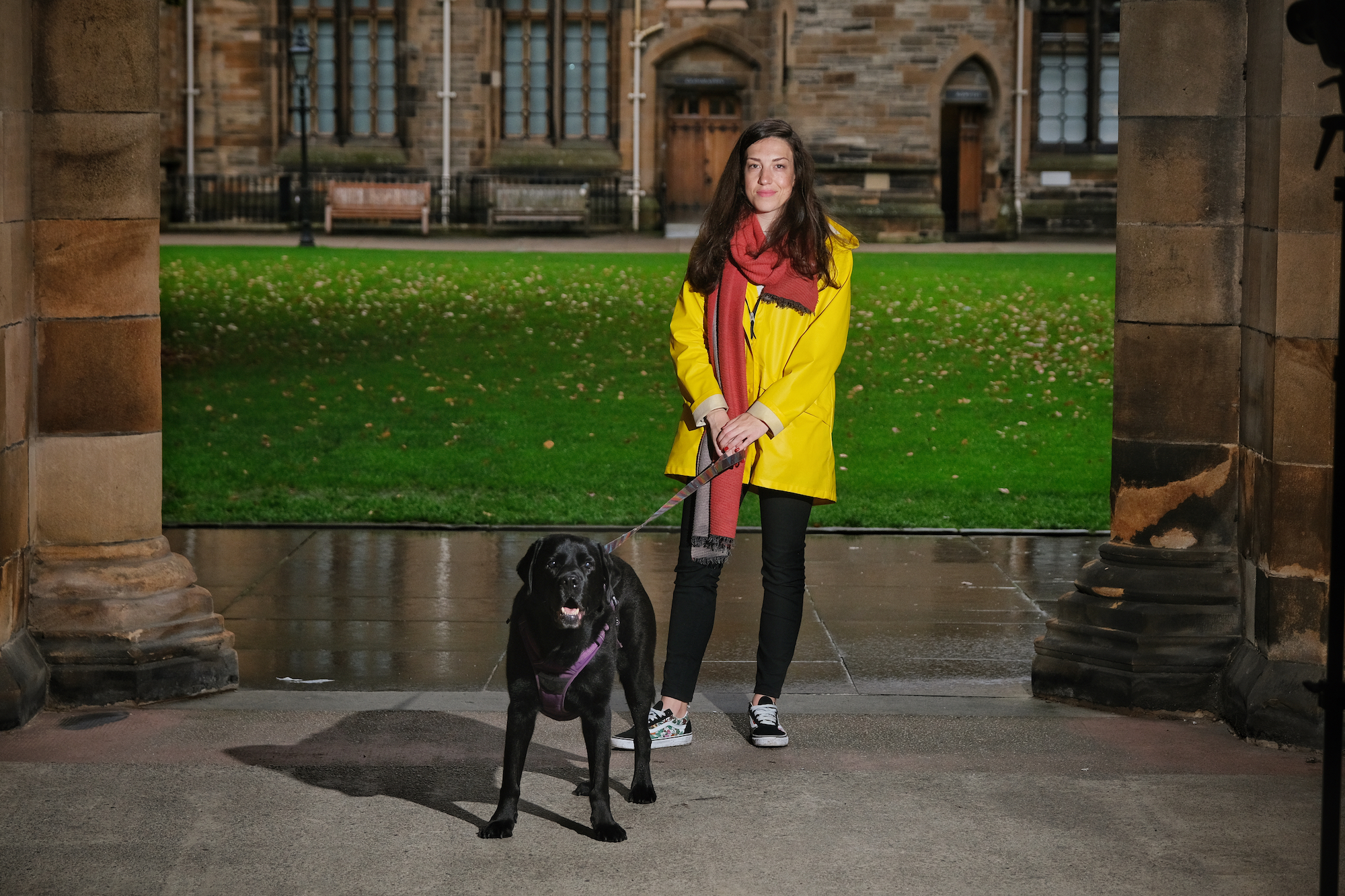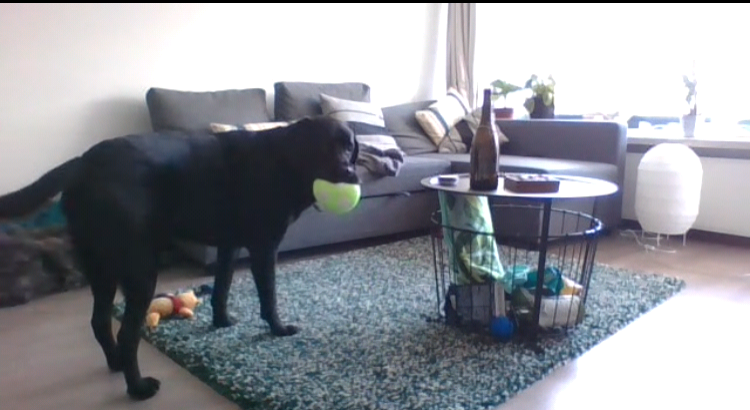A DOG ball which could help pets to keep in touch with their owners whilst home alone, has been developed by a Scottish university lecturer.
Working with colleagues from Aalto University, Finland, Glasgow University’s Dr Ilyena Hirskyj-Douglas has developed the ball.
Dubbed the DogPhone, it is the first system of its kind empowering pets to contact their owners over the internet.

Fitted with an internet-connected accelerometer, the ball responds to being shaken by starting a call via a nearby laptop.
Hoping that the device could help to address separation anxiety in pets, Dr Hirskyj-Douglas introduced the ball to her own dog, Zack, adjusting the sensitivity of the accelerometer based on the results.
Basing the choice of a ball on the preferences of the ten year old Labrador, Dr Hirskyj-Douglas demonstrated how the device could be used to start a call, then observed Zack’s interactions with it over 16 study days.
She said: “There are hundreds of internet-connected ‘smart toys’ on the market that dog owners can buy for their pets, from fitness monitors to remotely-controlled treat dispensers. Smart toys for pets are expected to be a 20 billion dollar industry by 2025.
“However, the vast majority of them are built with the needs of dog owners in mind, allowing them to observe or interact with their pets while away from home.
“Very few of them seem to consider what dogs themselves might want, or how technology might benefit them as living beings with thoughts and feelings of their own.”

Describing her aims with this device, she explained: “What I wanted to do with DogPhone was find a way to turn Zack from a ‘usee’ of technology, where he has no choice or control over how he interacts with devices, into a ‘user’, where he could make active decisions about when, where, and how he placed a call.”
Spreading the research over three months, the findings have been used to form the basis of research paper, to be delivered at the ACM Interactive Surfaces and Spaces Conference in ?ód?, Poland.
The table below outlines the three phases of Zack using the ball, spread across 16 study days.
| Phase | Duration | No. of Calls | Results |
| 1 | 2 days | 18 | Half of the calls seemed accidental, being initiated whilst Zack slept on the ball. The accelerometer was concluded to be too sensitive in this first phase. However, in some calls, Zack showed signs of interaction with the screen, picking up several of his toys to suggest that he wanted to interact with his owner. |
| 2 | 7 days | 2 | Following the accidental calls made in the first phase, the sensitivity of the accelerometer was reduced. However, with only two calls made, the insensitivity of the device was deemed to be too high and adjusted again for the third phase. |
| 3 | 7 days | 35 | With adjustments made to try and phase out accidental calls, Zack made an average of five calls per day. Some still appeared to be accidental, but he was also more significant interaction, pricking up his ears and approaching the screen. |
Dr Hirskyj-Douglas said: “Of course, we can’t know for sure that Zack was aware of the causal link between picking up the ball and making a call, or even that some the interactions which seemed accidental were actually unintended on his part.
“However, it’s clear that on some occasions he was definitely interested in what he was seeing, and that he displayed some of the same behaviours he shows when we are physically together.”
She added that an “unexpected consequence of the experiment” was that Zack wasn’t always in front of the camera, when calls were placed to him.

She continued: “Whatever form that takes, we’ve taken another step towards developing some kind of ‘dog internet’, which gives pets more autonomy and control over their interaction with technology.
“More refined versions of devices like DogPhone, built backed by further research into what dogs find appealing and comfortable, have real potential to turn the internet of things into a useful tool for animals, built around their needs and wants.
“That could help the ‘pandemic puppies’ – dogs acquired during the unprecedented growth in pet ownership during COVID-19 lockdowns – find new ways to deal with the stress of being home alone as their owners return to work.”

